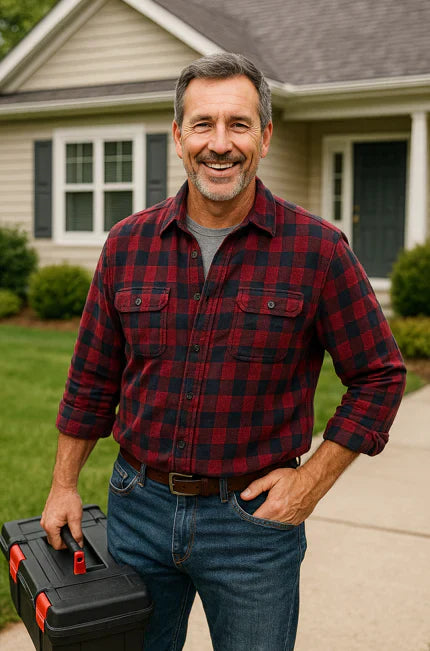Wiring Right Means Keeping It Safe — Mike’s Straight Talk ⚡👷♂️
Hey, Mike here. When it comes to R-32 packaged ACs, the refrigerant might get a lot of attention, but let me tell you — if the wiring isn’t done right, your whole system and your safety are on the line.
R-32 systems are energy-efficient and eco-friendly, but because R-32 is mildly flammable, the importance of clean, code-compliant electrical wiring can’t be overstated. Bad wiring risks shorts, sparks, or worse — hazards you definitely want to avoid.
Whether you’re a seasoned pro or a savvy homeowner looking to understand what goes into safe wiring, this guide breaks down the best practices to install and maintain electrical wiring for R-32 packaged ACs. No jargon, no fluff — just what you need to know to get the job done right.
Let’s get into it! ⚡🔧
Understanding the Basics: Why Electrical Wiring Matters for R-32 Systems 🔌🔥
R-32 refrigerant is classified as an A2L refrigerant — mildly flammable. This classification means any electrical fault that generates sparks or heat near refrigerant lines could potentially ignite leaked gas if there’s a leak.
That’s why the National Electrical Code (NEC) and other safety standards require wiring methods that minimize risk, such as using proper conduit, grounding, and circuit protection.
The National Fire Protection Association (NFPA) offers detailed guidance on electrical codes and safety practices specifically for HVAC systems using flammable refrigerants.
1. Use Proper Wire Types and Ratings for HVAC Circuits 🛠️📏
Not all wiring is created equal. For R-32 packaged ACs, always use copper conductors rated for the correct voltage and temperature ranges. Typically, #12 or #14 gauge wire is used depending on the amperage draw — but always follow manufacturer specs and local codes.
Use wire insulation types rated for outdoor exposure if the wiring runs outdoors, such as THHN or THWN-2. Proper insulation prevents degradation from weather, heat, and chemicals.
For more on wire types and electrical safety, the Electrical Safety Foundation International (ESFI) has excellent resources worth checking out.
2. Grounding and Bonding: Don’t Skip This Step! ⚡🛡️
A solid ground is your best defense against electrical faults. Make sure the AC unit’s metal frame is properly grounded using grounding conductors sized per NEC requirements.
Bonding all metal parts that might carry current in a fault ensures any stray voltage is safely directed to ground, preventing shocks or sparks near refrigerant lines.
If you’re unsure about grounding requirements, the Occupational Safety and Health Administration (OSHA) provides clear guidelines on workplace electrical safety that apply here.
3. Protect Circuits with Proper Breakers and Disconnects 🔒🚨
Always install circuit breakers sized correctly for your unit’s electrical load. The manufacturer’s specs will give you the minimum and maximum breaker sizes. Using a breaker that’s too large defeats protection; too small and it trips unnecessarily.
An external disconnect switch mounted near the unit is a must-have for service safety, letting technicians cut power quickly without going to the main panel.
This is also a good point to ensure that wiring paths avoid heat sources or sharp edges that can damage insulation over time.
4. Follow Conduit and Cable Routing Best Practices 🚧📐
Wiring should be run in conduit or raceways wherever exposed, especially outdoors or in crawl spaces. Conduit protects wires from physical damage and environmental factors.
Plan wiring routes to minimize length and avoid tight bends or kinks. Avoid running wiring too close to refrigerant lines or heat sources, which can degrade insulation or increase fire risk.
The National Electrical Manufacturers Association (NEMA) offers technical guides on conduit use and wiring methods that HVAC pros rely on.
5. Test and Inspect Thoroughly Before Power-Up ✅🔍
Before energizing your system, double-check all connections for tightness and proper polarity. Use a multimeter to verify voltage and continuity.
Inspect wire insulation for nicks or damage and ensure no wires are pinched under panels or screws.
After power-up, monitor current draw and system operation closely for irregularities — catching wiring issues early can save time and money.
Quick Safety Reminders for Working Around R-32 AC Wiring 🚨⚡
-
Always shut off power at the breaker before starting work.
-
Use insulated tools rated for electrical work.
-
Wear PPE including insulated gloves and safety glasses.
-
Follow EPA Section 608 guidelines for working with refrigerants around electrical systems.
-
Never assume wires are de-energized — always test first.
Mike Signs Off! ⚡🔥
Alright, wiring up your R-32 packaged AC isn’t rocket science, but it demands respect and attention to detail. Follow these best practices to ensure your wiring is safe, code-compliant, and ready to keep your system humming smoothly for years.
If you’re ever in doubt, bring in a licensed electrician or HVAC pro familiar with R-32 systems. Safety first — that’s Mike’s motto.
And if you need quality R-32 packaged AC units or accessories, swing by The Furnace Outlet to check out what’s available.
Want to learn about preventive maintenance tips for your packaged AC unit from me? Visit my guide: Keep It Running Strong.
Keep it safe, keep it smart, and keep cool! Mike out. ⚡👷♂️❄️







